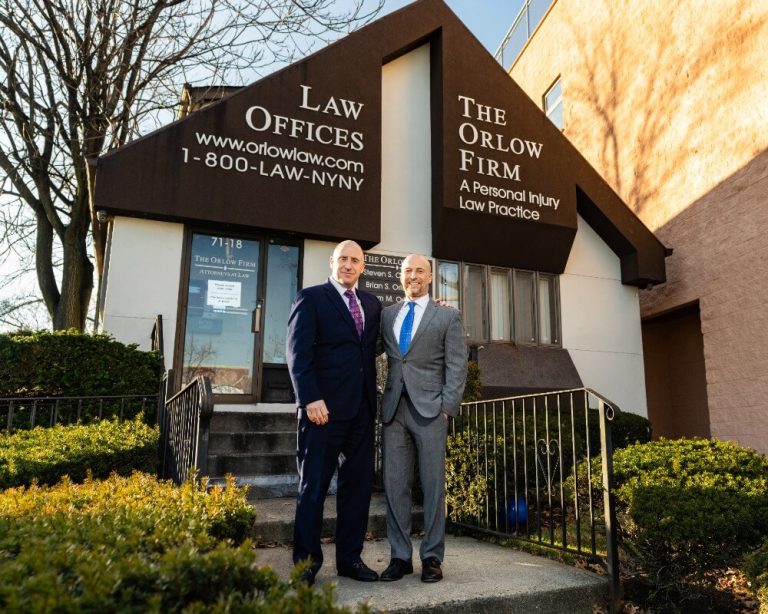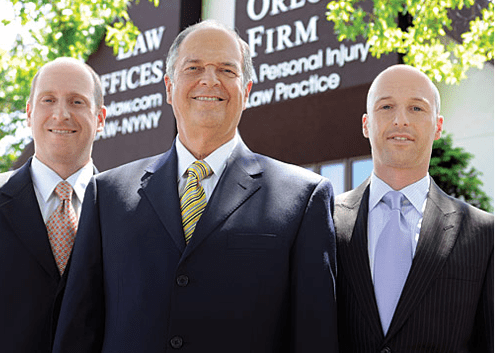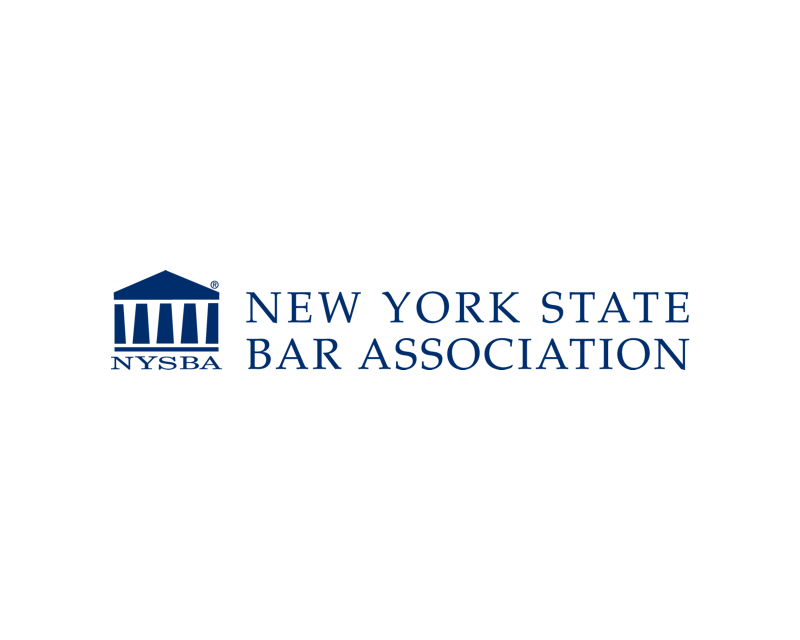The Following People Contributed to This Page
Cindy Cordova is a seasoned legal writer with over seven years of experience crafting clear, informative, and professional content for law firm websites. With a B.A. in English from Trinity Christian College, she combines her strong writing background with a deep understanding of legal topics to help firms connect with their clients through trustworthy and accessible content.
- June 10, 2025
What Does Res Ipsa Loquitur Mean in a New York Personal Injury Case?
Quick Answer: Res ipsa loquitur is a legal rule used when an injury likely wouldn’t happen unless someone was careless. In New York personal injury cases, it can help prove fault even without direct evidence. To learn more or get help with your personal injury case, contact The Orlow Firm at (646) 647-3398 for a free consultation.
How Can Res Ipsa Loquitur Help Prove Negligence Without Direct Evidence?
In many personal injury cases, it can be hard to prove exactly what caused the harm. Sometimes, there’s no clear witness, video, or direct evidence showing someone was careless. That’s where res ipsa loquitur can help. This legal idea means “the thing speaks for itself.” It allows injured people to prove negligence even when they don’t have direct proof of what happened.
Under res ipsa loquitur, the very nature of the accident suggests that someone’s negligence must have caused it. In other words, these types of accidents don’t normally happen unless someone was careless. It helps shift the burden of proof onto the defendant, who must then show they were not at fault.
Here’s how it works in simple terms:
- No Direct Proof Needed: You don’t need to show exactly how someone was negligent. The accident itself suggests that there was carelessness.
- Common Sense Reasoning: If something happens that normally wouldn’t occur without someone’s mistake, it’s reasonable to assume negligence took place.
- Control is Key: The item or activity that caused the injury must have been under the control of the person or company being blamed.
For example, imagine you’re walking on a sidewalk in New York City and an air conditioner unit falls from a window and hits you. You may not know exactly what went wrong or who dropped it. But air conditioners don’t normally fall unless someone failed to secure it properly. In that case, res ipsa loquitur might apply.
This approach helps victims by allowing them to argue that the accident itself is proof something went wrong—even if there’s no video footage or eyewitness account.
Res ipsa loquitur can play a powerful role in NYC personal injury cases, especially those involving defective products, falling objects, or unsafe property conditions. However, it must be used carefully and correctly to be accepted by the court. If you think this might apply to your case, talking to a qualified personal injury lawyer can be an important step.
When Can Res Ipsa Loquitur Be Used in NYC Personal Injury Lawsuits?
Res ipsa loquitur can be used in New York City personal injury lawsuits when there is no clear proof of what exactly caused the injury, but it’s still obvious that someone must have been negligent. The Latin phrase means “the thing speaks for itself.” In legal terms, it allows a person to show negligence based on the nature of the accident alone, without direct evidence showing exactly what went wrong.
In NYC, this rule often applies when:
- The injury wouldn’t normally happen unless someone was careless. For example, people don’t usually get hurt by falling ceiling tiles or dropped surgical tools unless someone made a mistake.
- The thing that caused the injury was under someone else’s control. This means the person or business had control over the object or situation that led to the injury. If a heavy light fixture falls inside a store, the store likely had control over its maintenance.
- The injured person did not cause the accident. If you didn’t touch or interfere with whatever hurt you, it supports your claim that someone else was likely at fault.
In these situations, res ipsa loquitur allows your lawyer to argue that it’s reasonable to assume negligence occurred, even if you can’t point to an exact action or mistake. This can be helpful in places like construction sites, hospitals, or apartment buildings in New York City, where evidence is often hard to find.
Here are a few examples of when this rule might apply in NYC:
- A patient is injured during surgery and discovers a surgical tool was left inside their body.
- A pedestrian walking on a sidewalk is hit by a falling object from an apartment window with no warning.
- An elevator suddenly drops in a residential building, despite no misuse by the rider.
Res ipsa loquitur is not used in every personal injury case. It’s most helpful when clear evidence is missing, but the accident strongly suggests that negligence occurred. If you think your situation fits this type of case, it’s important to speak with a personal injury lawyer familiar with how New York courts handle these claims.
To learn how res ipsa loquitur may apply to your situation, contact The Orlow Firm at (646) 647-3398 for a free consultation. We’re here to help you understand your legal options with care and clarity.
What Types of Accidents Might Involve Res Ipsa Loquitur in New York?
Res ipsa loquitur is a Latin phrase that means “the thing speaks for itself.” In New York personal injury law, it can apply when an accident happens in a way that clearly suggests someone was careless—even if there’s no direct proof of what went wrong. In these cases, the accident itself points to negligence.
Here are some common types of accidents in New York City that might involve res ipsa loquitur:
- Falling objects from buildings : If a tool or piece of equipment falls from a building and injures someone walking below, the accident may speak for itself. Objects don’t usually fall without someone being careless.
- Elevator or escalator malfunctions : Accidents involving sudden drops, jolts, or stuck doors might qualify. These machines don’t usually fail if they are properly maintained.
- Surgical instruments left inside the body after surgery : In medical malpractice cases, leaving tools inside a patient after surgery is often clear evidence of negligence.
- Collapsed staircases or ceilings : If a ceiling panel or staircase suddenly collapses in a NYC building, it may suggest poor maintenance or structural failure, even without knowing exactly what failed.
- Bus or subway accidents : If a train or bus jerks suddenly without cause and causes injury, the movement alone may point to negligence by the operator or transit company.
These types of accidents often occur in places where the owner or company is in control, such as buildings, hospitals, or public transportation. In New York City, landlords, building managers, and service providers are expected to keep their property or equipment safe.
To use res ipsa loquitur in your case, your legal team must show that the type of accident normally wouldn’t happen without negligence, and that the other party had control over whatever caused the injury. If you’re unsure whether your accident qualifies, a personal injury attorney can help explain your rights and options.
If you or someone you love has been injured in one of these types of accidents in NYC, you may be able to hold the responsible party accountable. For a free, no-obligation consultation, contact The Orlow Firm at (646) 647-3398.
What Must Be Proven to Use Res Ipsa Loquitur in Court?
To use res ipsa loquitur in a personal injury case in New York, certain conditions must be met. This legal rule helps prove negligence even if there is no direct evidence showing what went wrong. But it only applies in specific situations. To convince a court to apply res ipsa loquitur, you must show three key things.
- The event is the kind that doesn’t usually happen without negligence. In other words, accidents like this don’t normally occur unless someone was careless. For example, if a large light fixture falls from a restaurant ceiling and injures a customer, that’s not something that happens if proper safety checks were done.
- The object or situation was under the control of the defendant. You must show that the property, item, or equipment that caused the injury was controlled by the person or company you’re suing. If multiple people had control, it might be harder to use this rule. For example, if a patient is injured during surgery while unconscious, and only hospital staff had control, this may satisfy the requirement.
- The injured person did not contribute to the accident. The person bringing the case must show they didn’t cause or contribute to the injury. This prevents people from using res ipsa loquitur if their own actions led to the accident. For example, if someone is injured by an escalator in a Manhattan department store, but they were following all safety rules, this part may be met.
It’s also important to understand that res ipsa loquitur does not automatically win the case. It allows the court to infer, or assume, that negligence is likely. From there, the defendant can still explain their side and try to prove they were not careless.
This rule is often used in situations where the injury happens in a way that seems obvious someone was careless, but the injured person doesn’t know exactly what happened behind the scenes. It can be useful in cases involving NYC property owners, businesses, hospitals, or public transit systems when key information is not available to the person who was hurt.
If you think your situation may involve res ipsa loquitur, it’s a good idea to speak with a personal injury attorney. The legal team at The Orlow Firm can help determine if this rule applies to your case. Call (646) 647-3398 to speak with someone about your accident and your options.
How Do NYC Courts View Res Ipsa Loquitur in Personal Injury Claims?
New York City courts recognize res ipsa loquitur as a valid legal doctrine, but they apply it carefully and only in certain situations. The phrase is Latin for “the thing speaks for itself.” In personal injury lawsuits, it allows a victim to claim negligence even without direct proof of what the defendant did wrong. Instead, the nature of the accident itself may suggest that negligence most likely occurred.
NYC courts generally treat res ipsa loquitur as a way to shift the burden of explanation to the defendant. If the injured person can meet certain conditions, the court may let the case go forward to a jury—even if the exact cause of the incident isn’t known. However, courts will not accept this theory lightly. The injury must be one that ordinarily doesn’t happen unless someone was careless.
To apply this rule, New York courts usually require the injured person to show three things:
- The event is of a kind that usually does not happen without negligence. For example, a surgical tool left inside a patient or an elevator suddenly dropping might suggest carelessness even without direct proof.
- The thing that caused the injury was under the defendant’s control. This means the defendant had the responsibility to maintain, operate, or oversee the area or object that caused harm. For instance, if a light fixture falls from a landlord-controlled ceiling, the landlord may be seen as having control.
- The injured person did not contribute to the event. In other words, you must show you didn’t do anything to cause your own injury. If someone climbs a fence and falls, res ipsa loquitur might not apply because their own actions played a role.
In practice, NYC courts see res ipsa loquitur as a tool to level the playing field when direct evidence is missing, often because the defendant has all the key facts. This can be common in cases involving medical malpractice, building maintenance, or situations where private surveillance or records are not available to the victim.
Still, courts often give these cases thorough review before allowing them to proceed. Judges look closely at whether all three conditions apply. If they do, the judge may let a jury decide if the defendant was likely negligent based on the facts alone.
If you believe res ipsa loquitur may apply to your injury in New York City, it’s important to gather as much information as possible. Meeting the legal criteria can be tricky without guidance. For help understanding your options, call The Orlow Firm at (646) 647-3398 for a free consultation.
Real-Life Examples of Res Ipsa Loquitur in New York Injury Cases
Res ipsa loquitur, which means “the thing speaks for itself,” can play a big role in personal injury cases where there’s no direct proof of what went wrong. Instead of needing a witness or camera footage, the event itself suggests that someone was likely careless. Here are a few real-life examples from New York that show how this legal principle may apply:
- Falling building debris in Manhattan: A pedestrian is walking along a street when bricks fall from a building and cause serious injuries. There were no cameras and no one saw the bricks fall, but properly maintained buildings shouldn’t drop bricks on people. This unexpected event suggests negligence by the property owner or contractor working on the site.
- Surgical tool left inside a patient after surgery: A patient has surgery in a New York hospital. Weeks later, they experience pain and a scan shows a surgical sponge or tool was left inside. Patients don’t leave foreign objects in their own bodies — so in this case, res ipsa loquitur may be used because the injury likely happened from medical negligence.
- Elevator suddenly falls in an apartment complex: In a Bronx apartment building, an elevator suddenly drops several floors, injuring the occupants. Elevators don’t usually malfunction unless someone failed to inspect or maintain them. Since the building owner or maintenance company controls the elevator, they may be held responsible using res ipsa loquitur.
- Subway turnstile malfunctions without warning: A commuter passing through a New York City subway turnstile has it abruptly snap closed on their leg, causing injury. These machines are supposed to operate safely. If a commuter uses it normally and still gets hurt, the MTA or maintenance vendor may be held liable under res ipsa loquitur.
- Restaurant chair collapses without reason: A diner sits in a chair at a restaurant in Queens, and the chair breaks underneath them. The restaurant controls the furniture and is responsible for keeping it safe. A sudden collapse points to poor upkeep or a defect, even if no one saw it coming.
Each of these examples highlights a key point — the injury is something that wouldn’t normally happen unless someone failed to act with reasonable care. In New York, courts may allow injury victims to use res ipsa loquitur when they can’t show direct proof, but the accident itself points to likely negligence.
If you’ve been hurt in an unusual accident in NYC and believe someone else may be to blame, it’s important to understand your legal options. Call The Orlow Firm at (646) 647-3398 to schedule a free, confidential consultation with attorneys who can help explain how laws like res ipsa loquitur may apply to your case.
How Is Res Ipsa Loquitur Different from Standard Negligence Claims?
Res ipsa loquitur is a legal principle that helps prove someone’s negligence even when there is no direct evidence. It’s different from a standard negligence claim in a few important ways. Understanding these differences can help you know how your personal injury case might be handled in New York City.
1. Evidence Requirements
- Standard negligence: You must prove that the other person acted carelessly. You also need to show their actions directly caused your injury.
- Res ipsa loquitur: You don’t need direct proof of what the person did wrong. Instead, the situation itself strongly suggests someone was careless. The court can infer negligence just from the facts of how the injury happened.
2. Control of the Situation
- Standard negligence: The injured person must show fault, and it doesn’t always matter who controlled the object or event that caused the accident.
- Res ipsa loquitur: The person or company being blamed must have had full control over whatever caused the injury. For example, if a heavy light fixture falls from a ceiling in a NYC building, the property owner or manager may be presumed responsible if they had control over its upkeep.
3. Role in Causing Injury
- Standard negligence: If you share some blame, it may reduce your compensation, but you can still have a case.
- Res ipsa loquitur: This rule generally requires that the injury wasn’t caused by the injured person’s own actions. The incident must be something that would not normally occur unless someone in control was negligent.
4. Common Use Cases
Res ipsa loquitur is used in cases where accidents are unusual and wouldn’t normally happen without someone being careless. This may apply in:
- Surgical tools left inside a patient after surgery
- Elevator free-falls in a well-maintained NYC apartment building
- Objects falling from a construction site and injuring someone on the sidewalk
5. Legal Approach
- Standard negligence: Lawyers use facts, witness statements, and expert opinions to prove what went wrong.
- Res ipsa loquitur: Lawyers don’t need to show exactly how the person was careless. They use the nature of the event itself to argue that negligence must have occurred.
In short, res ipsa loquitur allows injury victims to move forward with a case even when direct evidence is missing. This can be especially helpful in New York City personal injury cases where the cause of the accident may not be immediately clear but still points to someone else’s fault.
If you think your injury might fall under this rule, especially after something unusual or unexpected, it’s important to have your case reviewed promptly. For guidance on what legal steps to take next, call The Orlow Firm at (646) 647-3398 for a free consultation.
What Are the Challenges of Using Res Ipsa Loquitur in NYC?
Using res ipsa loquitur in a New York City personal injury case can be helpful, but it also comes with challenges. This legal rule allows injury victims to suggest negligence based on the nature of the accident itself—without direct proof of how the negligent act occurred. However, proving it successfully in court isn’t always easy.
Here are some of the main difficulties people face when trying to apply res ipsa loquitur in NYC:
- Strict Requirements Must Be Met: New York courts will only allow res ipsa loquitur if certain conditions are clearly proven. These include:
- The event would not usually happen unless someone was negligent.
- The object or situation was under the control of the person or business being blamed.
- You didn’t do anything to contribute to the injury.
- Hard to Prove Exclusive Control: One of the biggest hurdles in NYC cases is showing that the defendant had “exclusive control” of the object or area that caused the injury. For example, in a multi-tenant building, it may be difficult to show that one party had total control of a shared stairwell or hallway.
- Competing Causes May Exist: If there are other reasonable explanations for how the injury happened, the court may not accept res ipsa loquitur. Defendants can argue that the accident wasn’t necessarily due to their actions, making it harder to move forward with this argument.
- Juries May Be Confused: Because res ipsa loquitur relies on inference instead of direct evidence, juries may struggle to understand it. Some jurors may expect more concrete proof of what went wrong, which could weaken your case.
- Court Discretion: Even when the legal standards are met, the judge has the power to decide whether to let the case be presented using res ipsa loquitur. In NYC courts, which see a wide variety of personal injury cases, judges are cautious about letting cases move forward without strong supporting facts.
For example, if scaffolding falls on a pedestrian walking near a construction site, it may seem obvious that negligence occurred. But proving that the construction company had sole control of that scaffolding at the exact time it fell may still be difficult. Under res ipsa loquitur, this control must be clearly shown.
While res ipsa loquitur can play a key role in certain New York personal injury cases, it’s not a guaranteed path to winning. Each case must be carefully evaluated to see whether the rule applies and how likely it is to help convince a jury or judge.
If you believe your injury might qualify under res ipsa loquitur or you’re unsure how to prove negligence in your case, speaking with a personal injury lawyer can help you better understand your legal options. For compassionate support and guidance, contact The Orlow Firm at (646) 647-3398 for a free consultation.
FAQs About Res Ipsa Loquitur in New York Personal Injury Law
- What does “Res Ipsa Loquitur” mean? It’s a Latin phrase that means “the thing speaks for itself.” In personal injury law, it means that someone’s injury very likely happened because of someone else’s carelessness, even if there is no direct proof of what went wrong.
- When is Res Ipsa Loquitur used in New York personal injury cases? It’s used when the accident is the kind that usually wouldn’t happen unless someone was negligent, and the person being sued had control over what caused the accident. For example, if a patient wakes up after surgery with a surgical tool left inside them, this may support a claim using Res Ipsa Loquitur.
- Do I still need evidence if I use Res Ipsa Loquitur? Yes. Even though direct proof of negligence (like video or eyewitnesses) isn’t required, you still need to show that the type of accident normally doesn’t happen without someone’s fault and that you didn’t cause the harm yourself. An experienced attorney can help determine if this principle fits your case.
- Can Res Ipsa Loquitur apply to accidents in places like stores, construction sites, or hospitals? Yes, it can. For instance, if something falls from a building and hits a passerby in NYC, or if a patient suffers harm during surgery, the injured person may be able to use Res Ipsa Loquitur to support their claim.
- Does using Res Ipsa Loquitur guarantee I will win my case? No. It simply allows the court or jury to consider that negligence may have happened, even without direct proof. The person or business you are suing can still present their own evidence to argue they were not at fault.
- Is Res Ipsa Loquitur used often in New York courts? It can be, especially when something unusual happens that clearly points to fault, but there’s no clear evidence showing how it happened. Courts in NYC may allow it, but they look carefully at whether the legal requirements are met.
- How is this different from a regular negligence claim? In a regular claim for negligence, you have to show exactly how the other person did something wrong. With Res Ipsa Loquitur, the injury itself can suggest negligence, as long as certain conditions are met. It’s meant to help when direct proof isn’t available.
- Should I talk to a lawyer if I think Res Ipsa Loquitur applies to my case? Yes. These types of cases can be complex. A personal injury attorney familiar with NYC laws can help you understand your options, investigate your case, and build the right legal strategy.
If you or a loved one has been injured in New York City and believe negligence was involved—even if you’re not sure how to prove it—call The Orlow Firm at (646) 647-3398 for a free consultation. We’re here to help you understand your rights and what legal steps can be taken.
Injured in NYC? Contact The Orlow Firm for a Free Personal Injury Consultation

If you or a loved one was injured in New York City and believe someone else may be at fault—even if you don’t have direct proof—the legal concept of res ipsa loquitur may apply. This Latin phrase means “the thing speaks for itself.” It’s used in personal injury cases where the accident likely wouldn’t have happened unless someone was careless or negligent.
At The Orlow Firm, we understand that not all accidents come with clear evidence. Some events, like a falling object from a building or a surgical sponge left inside a patient, seem to speak for themselves. If you’re dealing with a case like this, it’s important to know your legal rights and options.
We offer a free personal injury consultation to help you:
- Understand your legal rights: We’ll explain how res ipsa loquitur may apply to your case, in plain language that’s easy to understand.
- Evaluate your claim: We can look at the details of your accident and help determine if negligence likely occurred based on the circumstances.
- Discuss next steps: We’ll guide you on what you can do next, whether that means gathering more information or starting a legal claim.
Time is very important in personal injury cases. Waiting too long could make it harder to prove what happened or even prevent you from filing a claim at all. If you think you’ve been hurt because someone else acted carelessly, taking action early can help protect your rights.
Every case is different, and personal injury law in New York City can be complex. That’s why we’re here—to help you through the process with care and clarity. You don’t have to face this alone.
Contact The Orlow Firm today at (646) 647-3398 for your free consultation. We’re ready to listen, explain your options, and help you decide the best path forward.
The Following People Contributed to This Page
Cindy Cordova is a seasoned legal writer with over seven years of experience crafting clear, informative, and professional content for law firm websites. With a B.A. in English from Trinity Christian College, she combines her strong writing background with a deep understanding of legal topics to help firms connect with their clients through trustworthy and accessible content.










